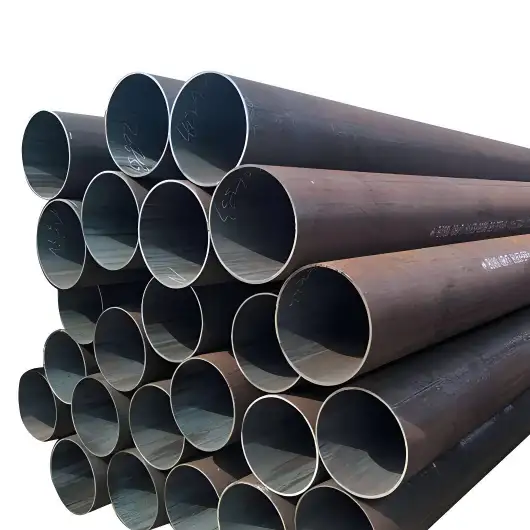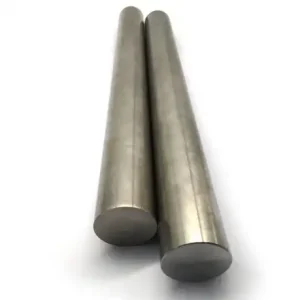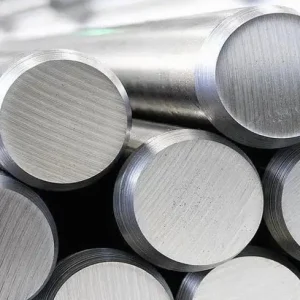ASTM A179 / ASME SA179 specifies seamless, cold-drawn, low-carbon steel tubes made for heat-transfer service (heat exchangers, condensers and similar apparatus). These tubes offer consistent wall thickness, predictable mechanical behavior and competitive cost for large tube bundles. For projects needing reliable, factory-direct supply with fast stock delivery and competitive pricing, MWalloys supplies A179 seamless tubes from China at 100% factory prices with ready inventory for rapid shipment.
What is ASTM A179 / ASME SA179?
ASTM A179 (also published as ASME SA-179) defines minimum-wall-thickness, seamless, cold-drawn, low-carbon steel tubes intended primarily for heat exchangers, condensers and related heat-transfer apparatus. The standard sets limits on outside diameter range, wall thickness, mechanical properties and mandatory tests (flattening, flaring, hydrostatic, hardness, etc.). Typical outside diameters in the scope run from about 3.2 mm (1/8 in.) up to 76.2 mm (3 in.).
Why that matters: cold drawn tube surfaces and controlled tolerances improve tube-to-tubesheet fit and heat-transfer reliability in shell-and-tube equipment used across power generation, petrochemical and HVAC sectors.
Common applications and service environments
ASTM A179 tubes are chosen when many short lengths of small-OD tube are required with good dimensional control and surface finish — typical uses include:
-
Shell-and-tube heat exchangers (refrigeration, process cooling).
-
Condensers and evaporators in HVAC and industrial chillers.
-
Feed-water heaters and low-pressure boiler services (where A179 mechanical limits and chemistry are appropriate).
-
General engineering where cold-drawn low-carbon tubes are acceptable.
They are not designed for high-temperature pipeline service where high temperature strength and creep resistance matters (that’s where grades like A106 or alloy steels come in).
Equivalent standards and common cross-references
ASTM A179 has widely recognized equivalents and near-equivalents used in other regions: DIN 17175 (many grades in that standard map to A179-type materials, e.g., St35.8), BS 3602 Part I and certain EN designations used in Europe, plus various national codes. When specifying for international projects, list A179 and the recognized equivalent (for example: “ASTM A179 / ASME SA179 (DIN 17175 St35.8 equivalent)”) to reduce sourcing friction.
Chemical composition
Below is a concise, practical composition table representative of A179 cold-drawn low-carbon tube chemistry. Note: actual certification values must come from the mill test report (MTR) tied to each heat of material.
| Element | Typical range / maximum (wt.%) |
|---|---|
| Carbon (C) | 0.06 – 0.18 |
| Manganese (Mn) | 0.27 – 0.63 |
| Phosphorus (P) | ≤ 0.035 |
| Sulfur (S) | ≤ 0.035 |
| Silicon (Si) | trace — often ≤ 0.03–0.10 (process dependent) |
Notes: Some suppliers publish slightly different ranges depending on cold-drawing practice and upstream melting chemistry; always confirm with the MTR.
Mechanical properties
The following are commonly quoted minimums for cold-drawn A179 tubes. Mechanical requirements can vary slightly with revision and supplier testing method — use MTR values when engineering a pressure vessel or when performing design calculations.
| Property | Typical minimum |
|---|---|
| Tensile strength (UTS) | ≥ 325 MPa (≈ 47 ksi) |
| Yield strength (0.2% offset) | ≈ 180 MPa (≈ 26 ksi) |
| Elongation (in 50 mm / 2 in.) | ≥ 35% |
These values reflect cold-drawn condition and the low-carbon chemistry that gives good ductility for tube forming and secondary operations.
Dimensional specifications, tolerances and typical sizes
ASTM A179 covers OD range and wall thickness appropriate for heat-exchanger applications. Manufacturers commonly offer the following ranges; confirm exact availability by mill and product line.
| Characteristic | Typical range |
|---|---|
| Outside diameter (OD) | 3.2 mm (1/8") to 76.2 mm (3") |
| Wall thickness (WT) | Approx. 1.0 mm to 12.7 mm (common: 2–6 mm for heat exchangers) |
| Standard length | 6 m (custom lengths available) |
| End finish | Plain, beveled, thread or chamfered — per buyer spec |
Tolerance control is tighter for cold-drawn products versus hot-finished tubing; that’s why A179 is preferred in tube bundles where hole-to-tube clearance in the tubesheet is critical.
What is equivalent to ASTM A179?
Practically, project teams equate A179 with DIN/EN boiler and heat-exchanger tube grades such as DIN 17175 St35.8 and with some national standards (BS 3602 Part I, NF A49-212). Exact mapping requires confirming permitted chemistry and mechanical minimums because naming between systems doesn’t always mean perfect interchangeability. When specifying a substitute, require the seller to provide an MTR showing chemical and mechanical compliance to the buyer’s acceptance criteria.
How ASTM A179 differs from ASTM A106
Short technical summary: A179 tubes are cold-drawn, low-carbon tubes intended for heat-transfer equipment and tight tolerances. A106 forgings/pipes (A106 Grade B commonly) are hot-finished pressure-service pipes meant for high-temperature service and pipeline transport. The two standards serve different engineering needs: use A179 where dimensional accuracy and surface finish for tube bundles matter; choose A106 where high temperature strength and continuous piping are required.
Key distinctions:
-
Manufacture: A179 (cold-drawn seamless); A106 (hot-finished seamless).
-
Service temperature: A106 is acceptable to significantly higher continuous service temperatures.
-
Tolerances/surface: A179 typically provides finer OD/tolerance and better surface finish.
-
Testing & end use: A179 test regime is tuned for tubes, including flattening and flaring; A106 emphasizes hydrostatic and high-temperature performance.
Manufacturing, heat treatment and testing requirements
A179 tubes are generally produced by seamless piercing followed by cold drawing to final size; some are annealed to remove drawing stresses. Required tests include:
-
Flattening test
-
Flaring test
-
Hydrostatic (or nondestructive) test
-
Hardness (select checks)
-
Visual and dimensional inspections
Suppliers often provide additional tests on request (NACE, microstructure, intergranular corrosion tests), and certificates (EN 10204/3.1 or 3.2 equivalents) for critical purchases. Always define required documentation in the purchase order.
2025 global price comparison
Market note: steel and tube pricing fluctuate with raw-material costs, freight, and mill throughput. The table below gives buyer-level ballpark ranges observed for standard cold-drawn A179 seamless tubes in 2025 from major sourcing regions for typical merchant quantities (per metric ton). These should be used for budgeting only — obtain official quotations for bids.
| Region | Typical 2025 price range (USD / tonne) | Comments |
|---|---|---|
| China (domestic mill / factory-direct) | $500 – $1,200 / t | Many mills offer factory dispatch; lower end for large volume. |
| India (producers/traders) | $600 – $1,300 / t | Domestic demand and freight to port influence price. |
| Europe (EU mills / stockists) | $1,000 – $1,800 / t | Higher regional production cost and energy factors. |
| USA (domestic producers & distributors) | $1,100 – $1,900 / t | Includes inland freight and distribution margins. |
Practical buying tip: Request price breakdowns (material, processing, testing, packing, freight) and insist on MTRs. For urgent requirements, factory stock in China frequently offers the shortest delivery windows at the lowest landed cost for many export markets.
Inspection and documentation checklist for buyers
When procuring A179 tubes, require the following from your vendor:
-
Mill Test Report (MTR) — chemical and mechanical results traceable to the heat.
-
Dimensional inspection report — OD, WT, length, end finish.
-
Non-destructive test certificate (hydrostatic or eddy current where needed).
-
Flattening and flaring test certificates.
-
Packing list and photos showing securing and corrosion protection.
-
Traceability labels on bundles (heat number, batch, piece count).
For critical installations, require third-party inspection (3.1/3.2) and specify acceptable suppliers.
Why choose MWalloys for ASTM A179 supply?
MWalloys is an industrial supplier focused on metal products for heat-transfer equipment. Key buyer benefits when ordering A179 from MWalloys:
-
Factory pricing: products shipped at 100% factory price — no hidden trader markup.
-
Chinese mill network: direct sourcing from certified Chinese mills able to meet A179 / SA179.
-
Stock availability: maintained inventory for common OD/WT combos to meet rapid delivery windows.
-
Documentation: standard MTRs and inspection packages provided; third-party inspection possible.
-
Export experience: packaging and export documentation tailored to widely used international shipping routes.
(Procurement teams should always confirm the MTR and arrange pre-shipment inspection for high-value orders.)
Frequently asked questions
-
Can A179 tubes be used at high pressure?
A179 is designed for heat-transfer service at moderate pressures; design pressure must be checked against wall thickness and material yield limits. For high-temperature, high-pressure piping, consider A106 or higher-alloy materials. -
Are A179 tubes seamless or welded?
A179 requires seamless manufacture and cold drawing to achieve the specified tolerances and mechanical behavior. -
What tests are mandatory for A179 tubes?
Flattening, flaring, hydrostatic (or equivalent NDT), dimensional checks and hardness when specified. MTR accompanies each heat. -
Is A179 the same as A192?
No. A179 is low-carbon cold-drawn heat-exchanger tube; A192 is a high-temperature seamless boiler tube grade with different chemistry and design intent. -
Can A179 be used in seawater condensers?
Plain carbon A179 is not recommended for aggressive seawater without corrosion protection; consider copper-nickel, stainless or coated tubes for long seawater service. -
What are the common OD/wall combos in stock?
Typical stocked sizes include 12.7 mm OD with 1.5–3.0 mm WT, 19.05 mm OD with 1.65–3.0 mm WT, and 25.4 mm OD variants — but availability depends on mill and region. -
Is annealing common for A179 tubes?
Some A179 tubes receive annealing after drawing to reduce residual stress; check the supplier spec if required. -
How does cold drawing influence tube performance?
Cold drawing improves dimensional control, surface finish and mechanical uniformity; it can increase tensile strength slightly while maintaining ductility. -
What documents should a buyer insist on?
MTR, packing list, dimensional report and hydrostatic/NDT certificates; third-party inspection for critical lots. (See section 11.) -
What is the fastest way to receive A179 tubes for a project?
Factory stock from Chinese mills often offers the fastest lead time and the most competitive landed cost, especially when arranged through a direct supplier like MWalloys.
Practical engineering notes and selection guidance
-
When to pick A179: tight tolerances, excellent tube-to-tubesheet fit and moderate temperature service.
-
When to pick A106 (or alloy): elevated temperatures, pipe runs and pressure circuits.
-
Testing to add: if the heat-exchanger will carry corrosive fluids, specify additional testing (NACE, eddy current, microstructure).
-
Procurement tip: always ask for heat numbers stamped on bundles and cross-checked with MTRs to preserve traceability.
For heat-exchanger projects where predictable dimensional control and consistent mechanical behavior are priorities, ASTM A179 / ASME SA179 cold-drawn tubes remain a cost-effective choice. If you require rapid supply with competitive factory pricing and full documentation, contact MWalloys — we work with certified Chinese mills, hold common A179 sizes in stock and can provide mill test reports and export packaging to international standards.





